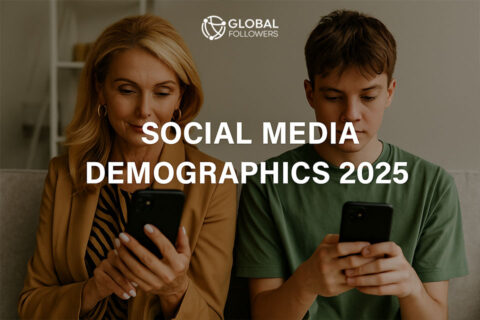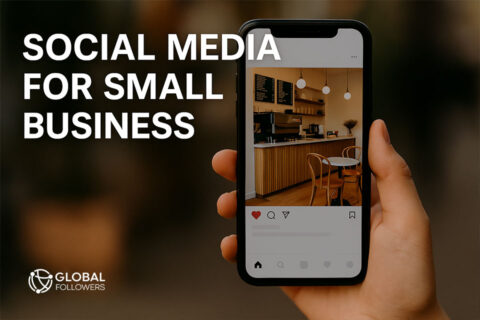Social media in 2025 is no longer just about visibility it’s about value, relevance, and agility. As user expectations shift and platform behaviors evolve, staying ahead of the curve means understanding not only the current social media trends, but also the cultural and technological currents behind them. Here’s how the landscape is changing and what it means for your strategy.
- 1. Edutainment Is the New Engagement Standard
- 2. Comments Become a Key Touchpoint
- 3. Social Listening Becomes the Backbone of Strategy
- Boost Your Social Media 🚀
- 4. Micro-Viral Content Outperforms Mass Appeal
- 5. AI Becomes an Essential Co-Creator
- 6. Platform Strategy Is Shifting Toward Precision
- Final Reflections on the Future of Social Media
1. Edutainment Is the New Engagement Standard
The most successful brands this year are not those with the loudest campaigns, but those offering content that educates, entertains, or ideally both.
- 60% of marketers say their content is designed primarily to inform or entertain.
- 25% of brands now devote over 80% of their content mix to entertainment-first content.
- Reels, Carousels, and TikTok videos are the top-performing formats for views.
This trend reveals a broader shift in the future of social media marketing: audiences are more responsive to creators who add value to their feed, rather than just promotional noise. Educational and humorous content earns saves and shares two of the strongest signals for organic reach.

2. Comments Become a Key Touchpoint
Engagement now extends well beyond likes and DMs. In 2025, proactive commenting has emerged as a high-impact yet underused channel for audience connection.
- 41% of organizations are now commenting on user or creator posts outside their own feeds.
- Engagement rates increase by 1.6× when creators respond to brand comments.
- The sweet spot for comment length is between 10–99 characters.
Rather than waiting for engagement to come to them, smart brands are seeking it out by participating in conversations in real time. This shift is transforming how social media growth is achieved not through volume, but through presence and relevance.
3. Social Listening Becomes the Backbone of Strategy
The move from intuition to insight continues to gain momentum, with social listening now seen as critical for measuring real impact.
- 62% of marketers using listening tools report greater confidence in calculating ROI.
- Listening has become the second-highest priority in social media planning, just behind engagement.
- It enables real-time awareness of brand sentiment, trending issues, and community needs.
This marks a turning point where social media marketing trends are no longer driven solely by analytics dashboards, but by understanding live audience feedback as it unfolds. Marketers are becoming more reactive, agile, and in tune with what audiences actually care about.
Boost Your Social Media 🚀
Grow engagement fast, safe, easy, and effective!
Explore GlobalFollowers Services4. Micro-Viral Content Outperforms Mass Appeal
Gone are the days of chasing a single viral post. In 2025, brands are investing in micro-viral moments that resonate with niche communities.
- 31% of brands now use social listening tools specifically to track cultural trends.
- Engagement is stronger in tailored, subcultural content than in generic viral campaigns.
- Brands focusing on cultural fluency are more likely to earn long-term loyalty.
This signals a broader understanding of the social trends that define modern influence: being deeply relevant to a small, passionate group is often more effective than being vaguely visible to a large one.
You can learn more about micro inflencers about this article: Why Small Matters: The Strategic Power of Nano and Micro Influencers

5. AI Becomes an Essential Co-Creator
Artificial Intelligence has fully embedded itself into social workflows not as a novelty, but as a necessity.
- 83% of marketers say AI has improved their content creation efficiency.
- AI is widely used for tasks like caption writing, video scripting, image generation, and even influencer outreach.
- AI-assisted tools are also optimizing publishing schedules and post timing.
Rather than replacing human creativity, AI is expanding it allowing teams to produce more, test faster, and deliver smarter. This trend underscores how the future of social media will rely not just on content ideation, but on streamlined, scalable execution.
6. Platform Strategy Is Shifting Toward Precision
While giants like Instagram and TikTok remain core channels, emerging platforms are reshaping how and where communities gather online.
- RedNote, Noplace, and Substack are gaining traction among Gen Z, creators, and niche audiences.
- The trend is toward focused platform use, not fragmented multichannel efforts.
- Community-based platforms now offer deeper engagement and loyalty.
This new phase in social media trends isn’t about being everywhere it’s about being exactly where your message matters most. Audience behavior is driving platform selection more than algorithmic popularity.
Final Reflections on the Future of Social Media
As we analyze what is trending right now on social media, a clear pattern emerges: strategy has shifted from volume to value, from reach to resonance.
The way we interact with digital platforms is rapidly evolving and at the center of this evolution is augmented reality in social media. In 2025, AR i...
AI social media manager tools have become essential in 2025 as brands and creators shift from simply staying active to staying strategically ahead acr...
The most resilient brands of 2025 will be those that:
- Publish purpose-driven content grounded in emotional value
- Prioritize conversation over promotion
- Track real-time signals not just historical data
- Leverage AI to support creativity, not replace it
- Embrace new platforms that reflect their audience’s changing behaviors
If you’re building your roadmap for the future of social media, start with one principle: relevance isn’t earned through presence alone it’s built through purpose, responsiveness, and cultural awareness.




No comments to show.